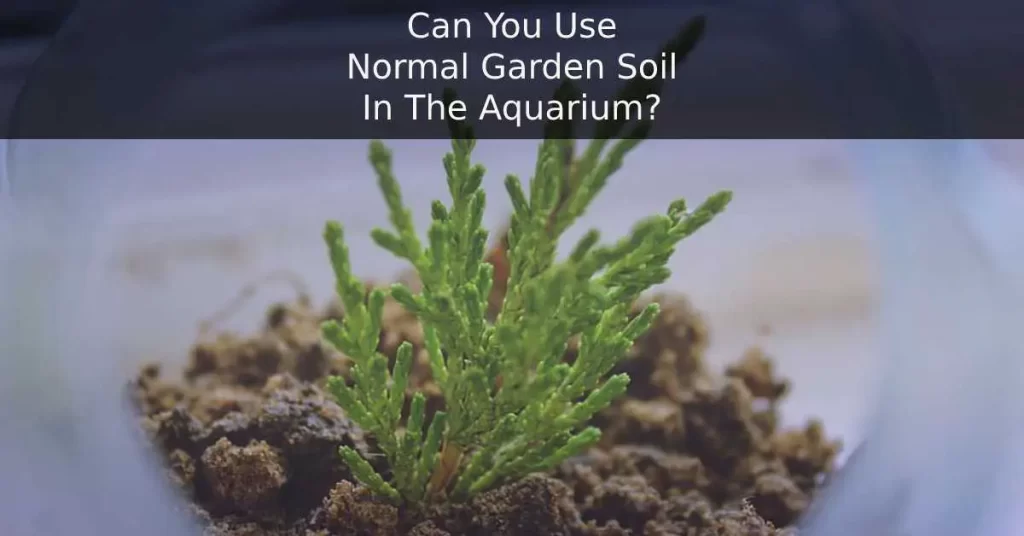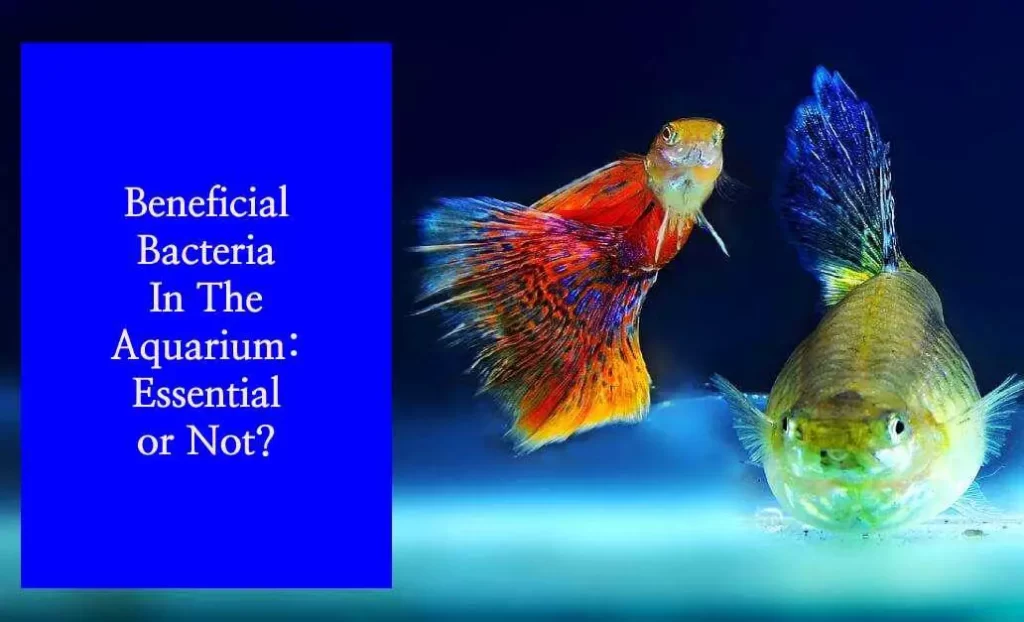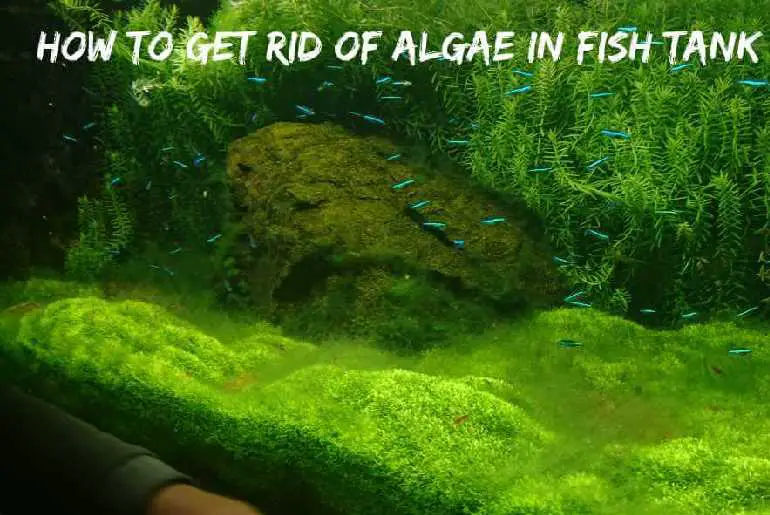“Too much of anything is bad.” This well-known phrase is true in almost all real-life cases. Water change in the aquarium is essential. However, too much of this can have severe effects. It is a myth that ‘massive’ water change is beneficial. As an aquarium hobbyist, you probably already know this.
You might have at least heard about water change from your circle. But if you are a beginner, then you may be unfamiliar with this situation. Nevertheless, you can prevent yourself from making a similar mistake. The amount and rate of water change in your aquarium depend upon different factors. All of them need to be considered to maintain the proper health of your fish.
As necessary as water change is, it can be equally dangerous. In this article, we will be talking about the pros and cons of water change. We will also be recommending water change schedules compatible with you.
Why Is It Important To Change Water Of The Aquarium?
Like air is important to human beings, water is important for the fish. Water is an essential factor in their life. Hence, the water needs to be clean for its well-being. When it comes to pet fish, aquarium water is the key to their good health.
Clean And Qualitative Water For Fish
So, it is necessary to change the water regularly to keep it clean. Changing the water of the aquarium in a certain amount at a time helps to maintain the quality of water. It also helps to keep the required nutrients and minerals at almost the same level.
You can also check Why Do Fish Tanks Get Dirty So Fast – How To Clean And Maintain Tanks for more information.
Keeps The Cycle On-Going
Basic maintenance of the aquarium is routine water change. This process keeps the cycle of chemical addition and removal on-going. When you remove the water from the aquarium in small portions, you reduce the number of chemicals too. Though some of the chemicals can be beneficial, too much of them can be harmful.
Related Article: How to Start Aquarium Nitrogen Cycle | Aquarium Cycling
Reduce Harmful Chemicals
Furthermore, fish waste and leftover food decompose to produce chemicals that pollute the environment. To reduce these chemicals, a water change is required.
Ammonia is one of the harmful chemicals found in the aquarium. It is broken down into nitrate. Excess of these can place chronic stress on the fish. Likewise, phosphate is also found in the aquarium water.
Also Read: How To Lower Ammonia In An Aquarium
Decrease Acidity Of Water
The decomposition of chemicals like ammonia and nitrate from organic waste material increases the acidity of water. You can learn How to Adjust pH in Fish Tank here.
Get Rid Of Foul Smell And Toxins
Regular water change helps to prevent the above mentioned commonly seen chemicals from polluting the water. Additionally, it helps in getting rid of the foul smell, toxins, discoloration, and other wastes. It provides the aquarium with other required elements like calcium, magnesium, and oxygen. However, too much water change can disrupt this balance.
Is Too Mauch Water Change Harmful For The Fish?
Yes, too much water change is harmful to the fish. Like I mentioned above, too much of anything is bad.
When you start changing the water more than required, you end up removing the necessary elements from the water. Moreover, it disturbs the equilibrium of the aquarium environment. It results in the fluctuation of water parameters and water temperature at once.
What Happens When You Change Too Much Of Water?
I know how tempting it can be to replace the entire tank with fresh water. But whatsoever, you should not do it.
Shift In Chemistry Of Water
Though slowly, over some time, the fish adapts to the chemistry of water altered by fish waste and uneaten food particles. But when you change the water in large volume, you make a drastic shift in the chemistry of water.
Stress And Health Problems
This disables the fish to adapt to the difference at the spur of the moment, leading to their death. Else, it stresses the fish and results in its poor health, which ultimately ends up taking its life. Too much water change removes the beneficial bacteria from the tank.
Related article: Health Benefits of Having an Aquarium Fish
Infusion Of Harmful Substances
Another possible result of frequent water change is infusing your tank with an excessive amount of substances. It is usual for us to use tap water to fill the tank, which contains minerals, nutrients, and chemicals in excessive amounts.
Algae Blooms
Since the de-chlorinator or the aquarium filter does not remove these, they end up causing algae blooms. However, using tap water in a small amount can be fine: either the plants take them, or the organic wastes bind to them. However, the frequency of water changes varies according on the species of fish you keep.
The algae blooms can be controlled by keeping algae eaters in your aquarium. Here are some other ways to get rid of algae in the fish tanks naturally.
Difficult To Adapt To Changes For Your Pet
Some fish can adapt to frequent water changes, whereas some can not. In either of the cases, you can increase the frequency of water changes, but the volume has to remain consistent.
You have to change the water in small portions to maintain the chemistry, temperature of the tank, and chemicals of the water.
How Often Should You Change The Water Of The Aquarium?
You can change about 10%-15% of the water once a week. However, change 5% of the water if you aim to do it twice a week. If you want to change the water only once every two weeks, then you can change about 20% of the water.
Additionally, change 25%-50% of the water if you are performing it once a month. This removes the toxins from the water and, at the same time, adds necessary elements to the aquarium water.
It also does not change the chemistry and stability of water drastically, giving the inhabitants some liberty for adapting. It aids in maintaining a healthy environment in the tank.
What Are The Factors To Consider While Performing Water Change In Aquarium?
Water change is a basic part of aquarium maintenance. There is no specific routine to perform it as it varies according to several factors that need to be considered.
The volume and frequency of it depend on your tank size and the species of fish.
Hardness Of Water
The hardness of the water you use also determines the amount of water that needs to be changed. Soft water needs to be changed more frequently than hard water.
How to maintain the hardness of the water in the aquarium? Find out here.
Plants
A heavily planted aquarium requires less volume of water change. The plants remove nitrates and stabilize the pH levels. The plants must be healthy and grown in low nitrate conditions before they become capable of taking up a distinct level of nitrates.
Related articles:
- Java Moss: Amazing Low Light Beginner Plant
- Nano Planted Aquarium Set up Guide: Everything You Need to Know
- 9 Best Low Light Aquarium Plants | Benefits of Aquarium Plants
Topping Up
Another factor that you need to take into account is ‘water change’ and ‘water addition.’ Many a time, people have mistaken these two as the same process. Having said that, these are two different cases.
Water evaporates from an open-topped aquarium. It leaves the tank with concentrated water as the pure water evaporates. Topping off the aquarium water after evaporation only increases the concentration of some substances in the water.
It increases the risk of adverse effects on the health of the fish. So when you notice that the level of water has decreased, use a gravel vacuum to clean the aquarium gravel. Then, remove more water and add fresh water to balance the water parameters.
COODIA Vacuum Gravel Cleaner Automatic Aquarium Sludge Extractor is the one that I have been using and it works well for my aquarium. So, I would suggest you use the same.
How To Correctly Perform Partial Water Change?
Water change is an integral process in keeping the aquarium healthy. Performing the process carefully and correctly can prevent your fish from numerous unwanted health issues.
A few simple steps can save you a lot of time and effort in the future. You have to condition the water in the tank every time entirely like when you did the first time.
- Let the water sit for 24 hours at room temperature. It dissipates gasses like chlorine, or treat it with conditioner.
- Check the pH level of water. The level should be similar to the pH level of tank water. You can use the API Aquarium Test Kit for this purpose.
- Change only about 20% water of the total volume.
- Turn off the water filter, heating element, and lighting element to minimize the electric presence.
- Clean the filter if it is dirty. You do not have to clean or replace the filter every time you change the water.
- Clean the plants and artificial decorations thoroughly. Avoid using soap or detergents as the chemical can be harmful to the fish.
- Scrub the walls of the tank if it is dirty. Here is an algae scraper that could be helpful.
- Vacuum the gravel (only if the tank is big). Remove the detritus. Do not clean the filter and the gravel simultaneously or on the same day. Both gravel and filter are home to beneficial bacteria. So, be careful not to disrupt them at the same time.
- Scoop out the appropriate volume of water from the tank.
- If there are any large removable debris, pick them out.
- Refill the tank with water that has been pretreated.
- Replace all the decorations.
- Reconnect or turn on the filter, heating, and lighting element.
Frequently Asked Question
When And How To Change All Of The Water?
I do not recommend 100% water change unless it is an emergency. It should not have to be done if you have a well-cycled or well-maintained tank.
You may come across a situation where you have to change the entire water when you are moving the tank. Or, when the water has been infected with parasites like Ick. Replacing the entire tank with new water can be stressful to the fish.
What I do when I change 100% of the water, that is only when it is absolutely necessary, is to keep my fish in another tank or bucket mixed with tap water and tank water.
I remove 90% of the water but leave the substrate covered with water. This way, you will not disturb the nitrifying bacteria. Then, follow the same process as for the partial water changes. The last and the only time I had to do this was when there was a spike of Nitrate in my tank.
Conclusion
As a hobbyist, I do not recommend a 100% water change frequently. Over the years of experience, I can assure you that you do not need to opt for this process as long as you maintain your tank hygiene.
Clean your tank regularly and make water changes in small portions. It assists you in keeping your fish healthy. Nevertheless, you need to be very cautious regarding the nitrate and ammonia levels. You should remove food waste and fish excretion timely to prevent this.
Since the fish adapt to chemicals and environment up to a certain extent slowly but steadily, it is better to not disrupt this by performing drastic water changes in large volumes.
Small changes in water parameters like temperature and pH level can affect the fish severely. It is a myth that too many frequent and vast portions of water changes keep the fish healthy. Rather, it causes several health issues. Sometimes, less is more.
Happy fishkeeping!
Related article:






